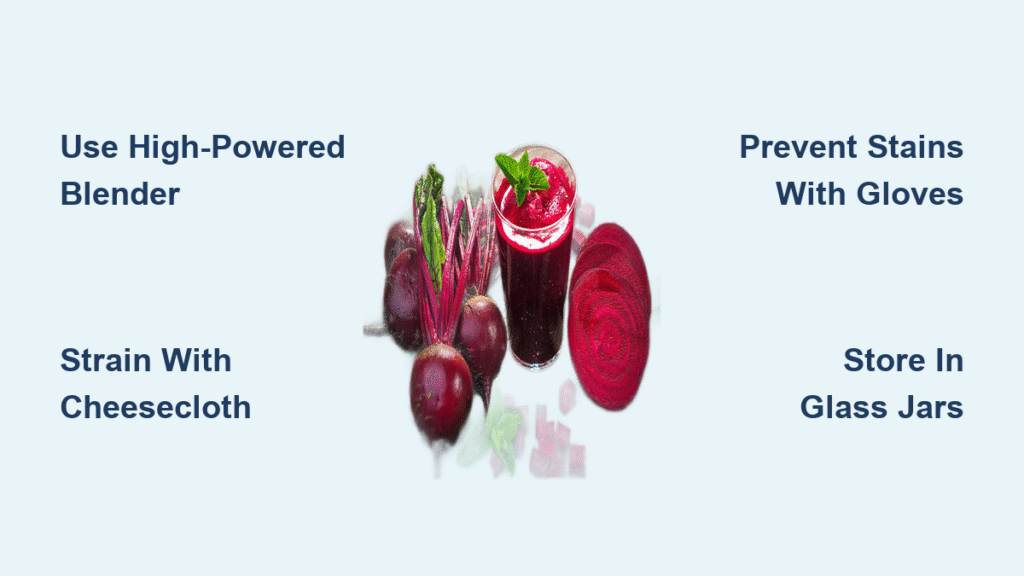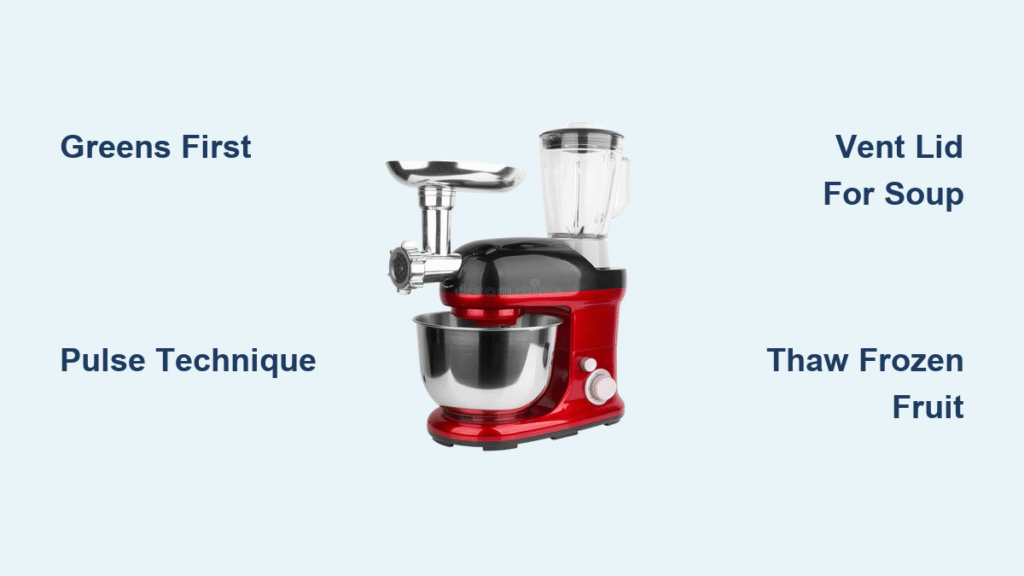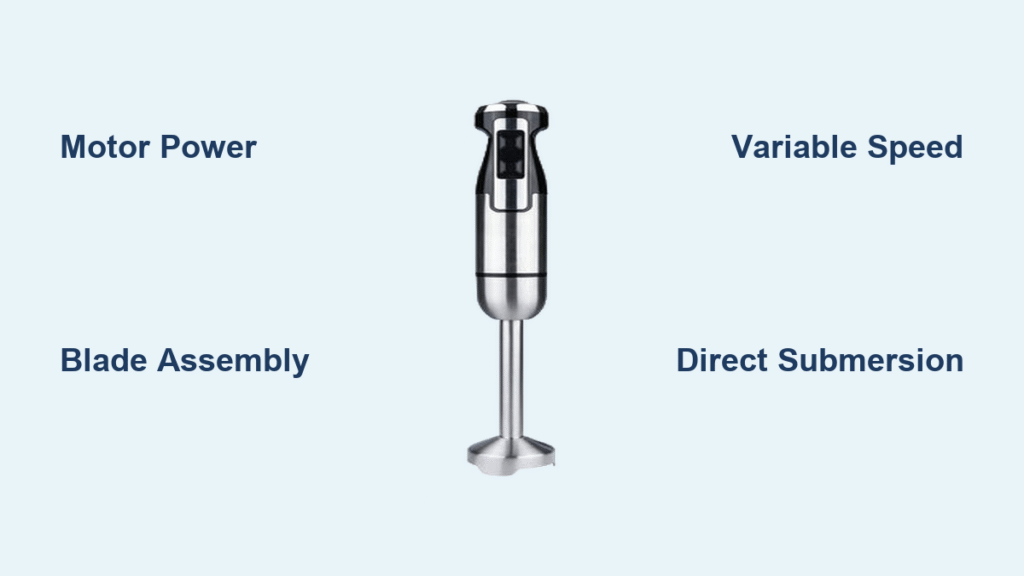Forget expensive $300 juicers—your regular blender creates smoother, more nutrient-dense beet juice for pennies per serving. Learning how to make beet juice in a blender saves 60-80% versus store-bought versions while preserving 35% more vitamin C through raw processing. Most home cooks avoid homemade beet juice thinking they need specialty equipment, but this method unlocks cardiovascular benefits and athletic performance boosts in under 10 minutes with tools you already own.
Store-bought beet juice loses vital nitrates during pasteurization and often contains hidden sugars, while commercial juicers waste 30-40% of your produce as pulp. The blender method solves both problems: it extracts 75-80% liquid yield from every beet and delivers potent blood pressure-lowering compounds without the $9.99 per bottle markup. Whether you’re tackling a 10-day beet juice challenge or need a Gatorade alternative for workouts, this guide shows you exactly how to make beet juice in a blender that’s vibrant, smooth, and never bitter.
Your Blender Setup for Maximum Beet Juice Yield

Critical Tools for Smooth Extraction
Skip cheap 500-watt blenders that strain on dense beets. Use a 1000+ watt model (Vitamix handles fibrous roots effortlessly, but Oster budget options work too) to pulverize beets fully in 60-90 seconds. Pair it with a fine-mesh strainer lined with cheesecloth or a nut milk bag—the double filtration catches microscopic pulp that causes grittiness. For storage, grab 500ml mason jars; their airtight seals prevent oxidation better than plastic containers.
Stain Prevention Must-Haves
Beet juice permanently dyes porous surfaces purple-red. Wear disposable gloves during prep to avoid stubborn hand stains, and use a glass or metal cutting board—never wood. Keep a dedicated towel nearby to wipe spills immediately; dried beet residue becomes nearly impossible to remove. Pro tip: Run cold water over your blender jar before adding ingredients to minimize blade staining during processing.
Perfect Blender Beet Juice Recipe (2 Servings)
Core Ingredients & Zero-Cost Swaps
The essential blend:
– 1 large raw beetroot (scrubbed, trimmed, peeled)
– 1 Honeycrisp apple (cored, peeling optional with high-powered blenders)
– 1-inch fresh ginger (peeled)
– ½ lemon (juiced)
– 2 cups filtered water
Smart substitutions:
– Reduce sugar: Swap apple for a 6-inch cucumber piece
– Boost iron: Add a handful of spinach (same detox benefits, zero flavor change)
– Lighten color: Use yellow beets for pink juice with identical nutrients
– Cut bitterness: Double the lemon if using earthy-tasting beets
Why This Ratio Wins
The 2:1 water-to-produce ratio ensures proper blade movement without dilution. Apples provide natural pectin for smoother texture, while ginger’s enzymes break down beet fibers. Lemon juice isn’t just for taste—it prevents oxidation and enhances nitric oxide conversion for better blood pressure results. Never boil beets first; raw processing preserves 100% of heat-sensitive betalains.
3-Step Blender Process for Grit-Free Juice
Pre-Prep in 2 Minutes (Non-Negotiable!)
Wash beets under running water—never soak, as they absorb moisture. Trim both ends, then peel completely; unpeeled beets create bitter flavors. Core your apple and cut into wedges. Peel ginger with a spoon’s edge (faster than a peeler), then roughly chop. Roll lemons on the counter before cutting to rupture juice sacs—this yields 20% more liquid. Skipping these steps causes stringy texture or metallic aftertastes.
Blending Sequence That Prevents Jamming
Always add water first, followed by beets, then apple and ginger. Starting on low for 15 seconds prevents blade jamming, then ramp to top speed for 60-90 seconds until completely smooth. Pause to scrape sides if needed—under-blended beets leave visible fibers. Check texture: it should resemble thin pancake batter. If chunky, add ¼ cup water max and blend 15 more seconds.
Straining Technique for 80% Liquid Recovery
Place your lined strainer over a bowl. Pour blended mix in small batches—overfilling reduces pressure. Press pulp firmly against the strainer with a spoon, then gather cheesecloth corners and twist like a tourniquet. This second squeeze extracts every drop. Yield tip: You’ll get 4 cups from this recipe versus 1-2 cups from juicers using the same produce.
Fix Bitter or Gritty Juice in 60 Seconds

Neutralize Earthy Flavors Instantly
Bitterness means insufficient apple or overripe beets. Immediately add 1 extra apple wedge and ½ tsp raw honey, then pulse 10 seconds. Lemon juice is your secret weapon—its acidity counteracts earthiness without added sugar. Never use vinegar; it destroys nitric oxide compounds. For future batches, peel beets thicker where the root meets the stem (most bitter zone).
Eliminate Graininess Permanently
Grittiness = under-blending or weak straining. If juice feels sandy:
1. Add 2 ice cubes and blend 20 seconds (cold temp firms fibers)
2. Strain through a second layer of cheesecloth
3. For Vitamix users: Run on “soup” setting 5 minutes for silkier texture
Avoid over-diluting—never exceed 2.5 cups total liquid, or you’ll lose nutrient density.
Emergency Stain Removal
Spilled juice on countertops? Sprinkle baking soda, then spray white vinegar—the fizz lifts stains in 30 seconds. For clothing: Soak in cold water with 1 tbsp salt before washing. Never use hot water; it sets beet pigments permanently.
Storage Hacks for 48-Hour Freshness
Refrigeration Protocol That Preserves Nutrients
Store juice in glass jars filled to the brim to minimize air exposure. Keep at 35-40°F—warmer temps degrade nitrates faster. Consume within 48 hours for maximum blood pressure benefits; after 72 hours, vitamin C drops 50%. Before drinking, shake vigorously to recombine separated layers (natural settling occurs).
Freezer Cubes for On-Demand Detox Shots
Pour into ice cube trays, freeze solid, then transfer to labeled freezer bags. Thaw overnight for morning shots, or drop 2 cubes directly into smoothies. These retain 90% nutrients for 3 months—perfect for your 2-5 day detox plan. Never refreeze thawed juice; it develops off-flavors.
Critical Safety Checks Before Drinking
Who Must Avoid Beet Juice
Skip beet juice entirely if you have oxalate kidney stones—beets contain 65mg oxalates per serving, triggering stone formation. Those on blood pressure meds like lisinopril must consult a doctor first; beet juice’s nitrates can dangerously amplify medication effects. Pregnant women should limit to 1 cup daily due to concentrated betalains.
Normal vs. Dangerous Body Reactions
Harmless red urine or stool (beeturia) appears within 24 hours—this affects 10-14% of people and signals healthy digestion. However, persistent stomach cramps or dizziness means stop immediately—you likely have undiagnosed oxalate sensitivity. Start with ½ cup daily to assess tolerance.
$2.50 vs $16: Why Blenders Crush Store-Bought Juice

Cost Breakdown That Pays for Your Blender
One batch costs $2.50 using organic ingredients (beet: $1.20, apple: $0.60, ginger/lemon: $0.70). Premium bottled juice runs $12-16 for equivalent nutrients. At 3 bottles weekly, you’ll save $400+ annually—paying for a Vitamix in 2 months. Juicers cost 3-4x more per ounce since they waste edible pulp.
Nutrient Advantage Over Bottled Versions
Store-bought juice loses 40% nitrates during pasteurization. Your fresh blend delivers 385mg potassium per serving (8% DV) for electrolyte balance and 22% daily folic acid for cell repair—critical for athletes. The fiber-rich pulp you retain (vs. juicers) adds 4.3g dietary fiber per serving, supporting natural detox without laxatives.
Zero-Waste Pulp Uses That Save Money
Bake With “Waste” for Healthier Treats
Replace 25% of flour with beet pulp in muffins or bread—it adds moisture and natural sweetness while boosting fiber. For veggie burgers, mix pulp with black beans and oats; the vibrant color masks moisture loss during cooking. Freeze pulp in ice cube trays to add to soups later—thawed pulp thickens stews perfectly.
Final Disposal That Completes the Cycle
Compost any leftover pulp within 24 hours (it spoils fast). Never trash it—beet pulp enriches soil with iron and magnesium. For apartment dwellers: Dry pulp in a 200°F oven for 2 hours, then crumble into houseplant soil.
Final Note: Start with this basic recipe for 5 minutes of active time yielding 4 cups of vibrant juice. Within days of daily consumption, expect brighter skin and easier workouts—signs the nitrates are improving oxygen delivery. For your next batch, add carrots for sweeter juice that still lowers blood pressure. Ready to scale up? Double ingredients for family-sized servings, or freeze cubes for emergency detox shots. Your blender isn’t just for smoothies—it’s your most powerful (and affordable) health tool.





